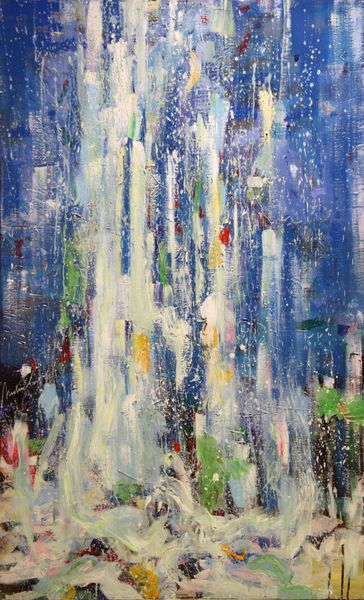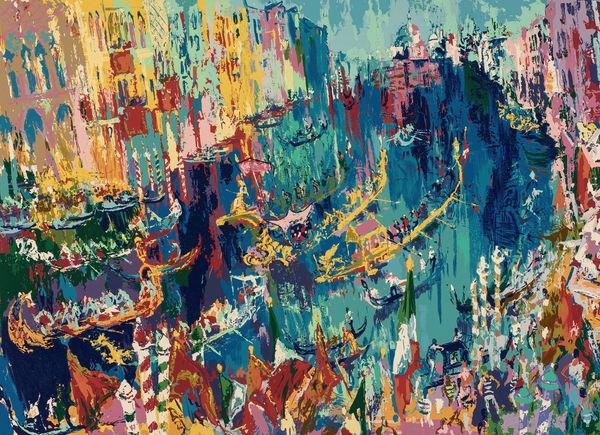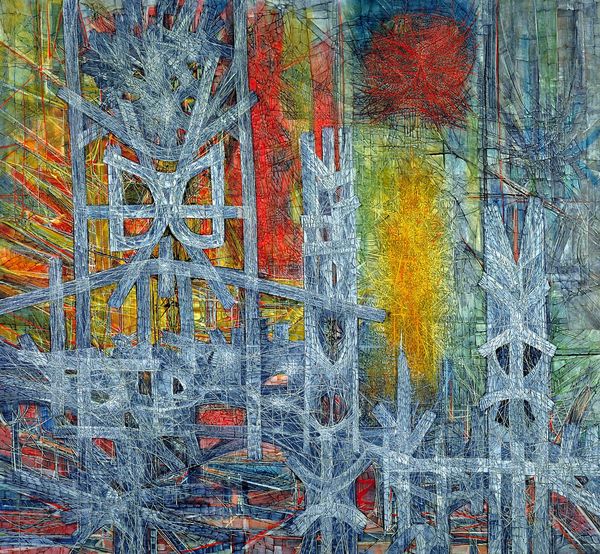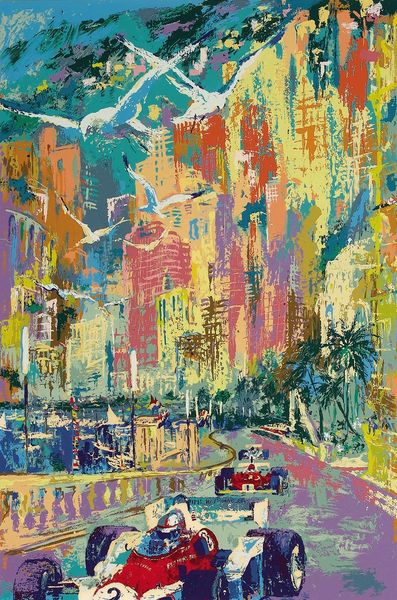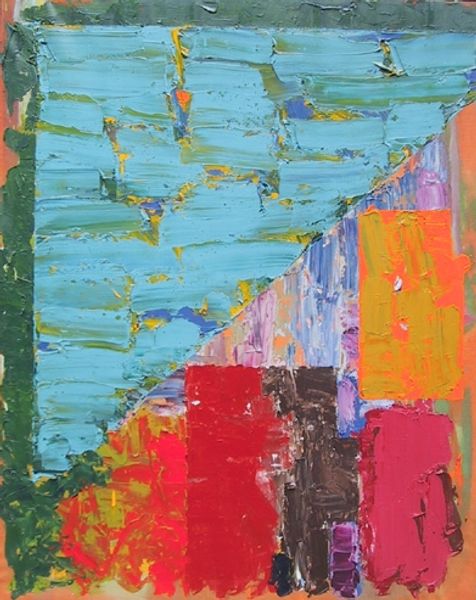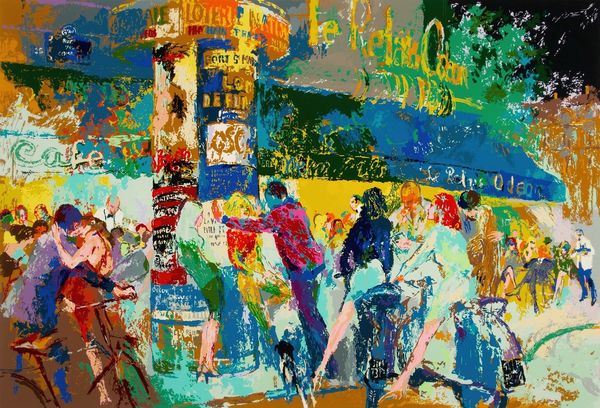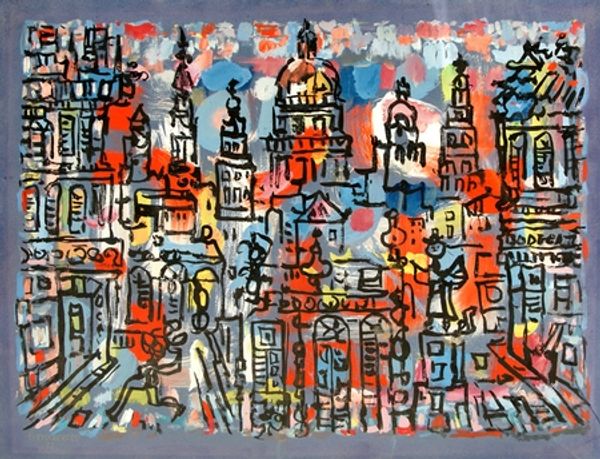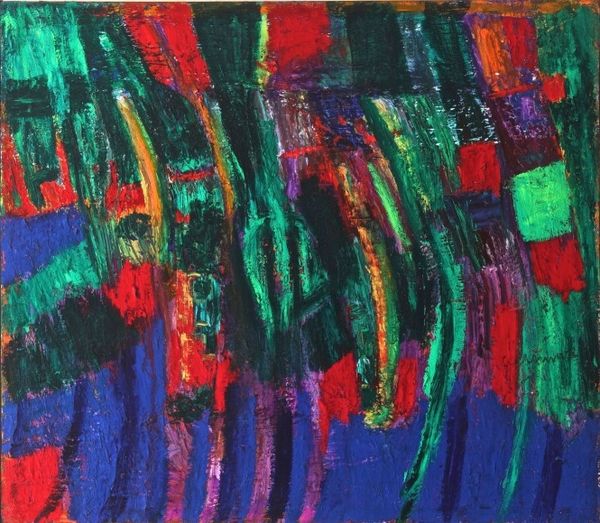
Copyright: Modern Artists: Artvee
Curator: Looking at LeRoy Neiman’s "Manhattan Panorama," completed between 1980 and 1984, one can immediately appreciate the artist's vibrant, almost chaotic, energy. Editor: Chaotic is a kind word. It feels as if the city has been put through a kaleidoscope and reconstructed with thick dollops of bright acrylic paint. What a sensory overload. Curator: Absolutely, and that sensation speaks to the complexities of urban existence, especially during the ‘80s in Manhattan. Neiman's Expressionistic style rejects traditional representations of the city, highlighting instead a frenetic rhythm and a sense of perpetual motion tied up with anxieties about rapid gentrification and social inequalities. Editor: I can see that. The brushstrokes themselves become part of the story—each one a deliberate, physical mark, evidence of the artist's labor and intention. The sheer volume of paint feels almost aggressive, pushing the canvas to its material limits, a parallel, perhaps, of the social tensions of the period. I would love to know what brand of acrylic he was using to reach this effect. Curator: Interesting point, how the labor itself creates an emphasis in the painting; that also influences our understanding of identity. The dizzying effect really captures a moment of collective anxiety regarding social issues. As if Neiman aimed to use canvas to expose the inner turmoil of this era. Editor: And he really transforms the city into this almost fevered dream. I mean, look at Central Park in the back, its size feels deliberately overwhelming, reminding us that while these concrete giants may command the skyline, even still there is more to this material reality. The colors and textures are raw and almost unrefined. Curator: Indeed! So, in Neiman’s own vision, how are we seeing an authentic depiction of labor, society, and identity converge? What statement do you believe he aimed to portray? Editor: I think what makes this artwork successful is the understanding of New York City at the height of capitalism, where everything—labor, land, and even dreams—gets commodified. It is up to us to consider our place as a social collective amongst so much noise and so many stories. Curator: A provocative note on which to conclude. Editor: Indeed. A perfect encapsulation, I believe, of Neiman's legacy.
Comments
No comments
Be the first to comment and join the conversation on the ultimate creative platform.
